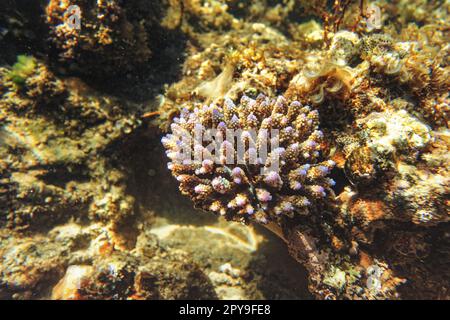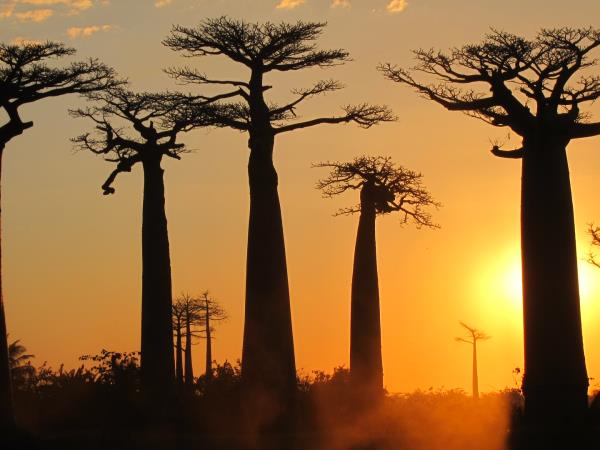Madagascar: A Marine Biologist's Journey Through Coral Reefs and Responsible Ecotourism

Madagascar, the "Eighth Continent," is a land of unparalleled biodiversity, where lemurs leap through emerald rainforests and ancient baobabs stand sentinel over sun-baked plains. As a marine biologist specializing in coral reef conservation, I recently embarked on a 10-day journey to Madagascar with a mission: to assess the health of its vibrant coral reefs and understand the impact of ecotourism on local communities. My focus was on coral bleaching resistance in Acropora and Porites species, using the Coral Watch Coral Health Chart and water quality tests to monitor the situation. This trip wasn’t just about the science; it was about witnessing firsthand the efforts to protect this unique ecosystem and the vital role of responsible travel.
Nosy Be: Diving into Sustainable Practices (Days 1-3)
My adventure began in Nosy Be, a popular tourist destination known for its beautiful beaches and coral gardens. I checked into the Vanila Hotel & Spa, a hotel with an Ecotourism Madagascar (ETM) certification, a great way to begin a journey of responsible travel. The ETM certification ensures that the hotel adheres to strict environmental and social standards, supporting local communities and minimizing its ecological footprint.
The next few days were spent immersed in the underwater world.
Exploring the Coral Gardens of Nosy Sakatia
My diving gear was ready; I was using my trusty Scubapro Hydros Pro BCD, Aqualung i300c dive computer, and Mares Avanti Quattro Power fins. My camera gear included an Olympus TG-6 with an underwater housing, a SeaLife Sea Dragon 2500 photo/video light, and a red filter for color correction.
The coral gardens of Nosy Sakatia were a breathtaking sight, although there were signs of stress on the reefs. I was particularly focused on photographing Acropora coral, meticulously documenting its clarity and color.

The vibrant reefs were teeming with marine life: schools of vibrant reef fish darted in and out of the coral formations, clownfish danced around anemones, and the occasional moray eel peeked out from its hiding place. Despite the beauty, I noted some areas of coral bleaching, a worrying sign of rising ocean temperatures. Using the Coral Watch Coral Health Chart, I recorded initial scores that indicated moderate stress in certain areas.
Talking Sustainability with Local Dive Operators
I spent time interviewing local dive operators, eager to learn about their sustainable practices. Many were actively involved in educating tourists about responsible diving, discouraging touching the coral, and avoiding single-use plastics. They also participated in reef cleanup initiatives, removing debris that could harm the delicate ecosystem.
Water Quality Analysis
To gain a deeper understanding of the reef's health, I analyzed water samples for phosphate and nitrate levels. High levels of these nutrients can contribute to algae blooms that smother coral reefs. The results indicated that while the water quality was generally good, there were localized areas with elevated nutrient levels, likely due to agricultural runoff and wastewater discharge.
Andavadoaka: Working with Reef Doctor (Days 4-5)
My journey continued to Andavadoaka, a remote coastal village where I collaborated with Reef Doctor, a conservation NGO dedicated to protecting the region's coral reefs. I stayed in a locally-owned guesthouse that supported community initiatives, embodying the principles of responsible tourism.
Documenting Coral Bleaching and Erosion
Snorkeling the fringing reefs of Andavadoaka revealed a different story. The reefs here were showing more pronounced signs of coral bleaching and erosion, likely due to a combination of climate change and unsustainable fishing practices.
Participating in a Coral Nursery Project
One of the most inspiring aspects of my time in Andavadoaka was participating in a coral nursery project. Reef Doctor is actively involved in growing heat-resistant coral varieties, particularly Acropora and Porites, with the goal of replanting them on damaged reefs. It was incredible to see firsthand how dedicated conservationists are working to enhance coral reef conservation Madagascar.
Meeting with Local Fishermen
I had the opportunity to meet with local fishermen to discuss sustainable fishing techniques. They shared their traditional knowledge of the sea and their concerns about the declining fish populations. Reef Doctor is working with the fishermen to promote responsible fishing practices, such as using selective fishing gear and establishing marine protected areas. The goal is to ensure long-term food security for the community while safeguarding the health of the coral reefs.
Here I sampled fresh grilled Job Fish, sourced directly from local fishermen who practiced responsible fishing. The fish, simply seasoned with local spices and grilled over an open fire, was incredibly flavorful and a testament to the quality of sustainably sourced ingredients.
Beyond the Reefs: Exploring Madagascar's Diverse Landscapes (Days 6-9)
While my primary focus was on coral reefs, I also wanted to experience Madagascar's other natural wonders and understand the impact of tourism on its diverse ecosystems.
Andasibe-Mantadia National Park (Day 6)
I ventured into the lush rainforests of Andasibe-Mantadia National Park, a world away from the arid landscapes of the southwest. I hiked with a local guide from Mitsinjo Association, an organization known for its lemur conservation efforts. The rainforest was alive with the calls of exotic birds and the rustling of leaves, signaling the presence of elusive lemurs.
While the park provides vital habitat for these endangered primates, tourism can also have negative impacts. Our guide explained the importance of responsible ecotourism, such as keeping a safe distance from the animals, avoiding feeding them, and supporting local guides who are trained in conservation.
Community-Run Vanilla Plantation (Day 7)
Near Andasibe, I visited a community-run vanilla plantation that employs sustainable farming methods. It was fascinating to learn about the process from bean to bottle, and to see how fair trade practices benefit the local economy. Sampling the vanilla extract was a treat – its rich, complex flavor a testament to the care and dedication of the farmers.
Tsingy de Bemaraha Strict Nature Reserve (Day 8)

The next day took me to the Tsingy de Bemaraha Strict Nature Reserve, a UNESCO World Heritage site famed for its unique limestone karsts. Exploring the "Grand Tsingy" with a certified guide was an unforgettable experience. The sharp, jagged formations were both awe-inspiring and challenging to navigate. The guide emphasized the importance of staying on marked trails to protect the fragile ecosystem and avoid disturbing the endemic wildlife. This area demonstrated the significance of Tsingy de Bemaraha responsible travel guide.
Mangrove Replanting Project (Day 9)
Near Morondava, I worked with a local village involved in replanting mangroves to protect the coastline from erosion. It was hard work, but incredibly rewarding to know that I was contributing to a project that would benefit both the environment and the community.
The baobab forests near Morondava, particularly the iconic Alley of the Baobabs, were a sight to behold. These ancient trees, some over a thousand years old, stood as silent witnesses to the passage of time.
Food for Thought (and the Stomach)
My culinary adventures in Madagascar were as enriching as my explorations of its natural wonders.
In Antananarivo, I savored Romazava, a traditional beef stew with greens. This particular version was made with sustainably raised zebu, a type of cattle native to Madagascar. The flavors were rich and hearty, and the knowledge that the ingredients were sourced responsibly made the meal even more enjoyable.
I also sampled Koba, a sweet and sticky ground peanut and rice dessert, from a street vendor in Antsirabe. It was a simple yet satisfying treat, and a taste of local life.
Final Thoughts: The Importance of Responsible Ecotourism
My trip to Madagascar was a powerful reminder of the importance of responsible ecotourism. By choosing accommodations and tour operators that are committed to sustainability, supporting local communities, and minimizing our environmental impact, we can help protect this incredible island for future generations.
How can I travel to Madagascar responsibly? Here are a few practical tips:
- Choose ETM-certified accommodations: Look for lodges and hotels that have been certified by Ecotourism Madagascar (ETM).
- Support local businesses: Eat at local restaurants, buy souvenirs from local artisans, and hire local guides.
- Minimize your environmental impact: Reduce your use of single-use plastics, conserve water and energy, and dispose of waste responsibly.
- Respect local culture: Learn a few basic phrases in Malagasy, dress respectfully, and be mindful of local customs and traditions.
The findings on coral reef health were concerning, with Coral Watch scores indicating stress in several areas. However, the dedication of local conservationists and community members gives me hope for the future.
Madagascar's beauty and fragility are intertwined. By embracing Madagascar responsible travel, we can ensure that future generations can experience the wonder of this unique island.
Instagram Reel Script: Underwater Madagascar
HOOK (0-3 seconds): A sudden burst of bioluminescent plankton, filmed in slow-motion with a GoPro POV, creating an ethereal, underwater galaxy effect. Action word: "Bursting".
SCENE (3-7 seconds): Rapid cuts showcasing vibrant coral reefs teeming with marine life in Nosy Be. Cinematic 4K, shot on a RED camera with dramatic lighting. Focus on the colours, clarity and detail of the coral. Camera work: Orbit around a large brain coral, transitioning to a close-up of a clownfish darting in and out of an anemone.
TWIST (7-10 seconds): Abrupt cut to Dr. Sharma holding a Coral Watch Coral Health Chart underwater, looking concerned. Camera angle: Low-angle shot, emphasizing her serious expression. Text overlay: "Madagascar's Underwater Paradise...Is in Trouble?"